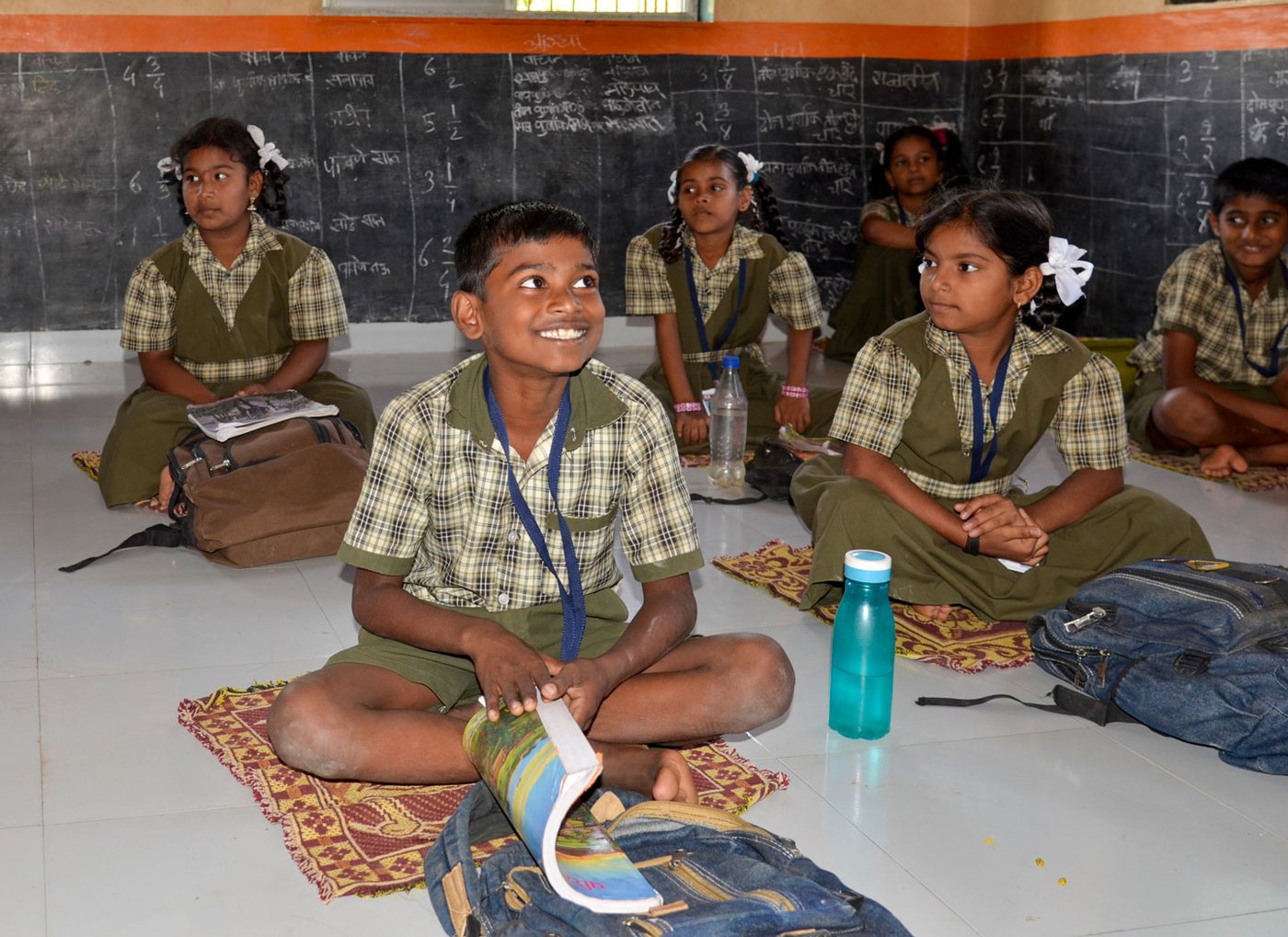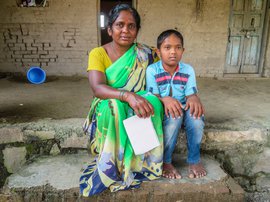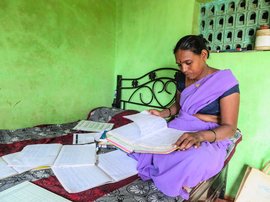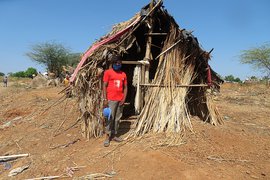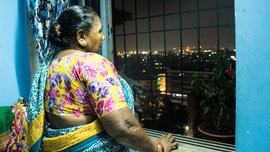On his first day at the new municipal corporation-run school in Chennai, eight-year-old Raghu could not understand a word of the Tamil written on the blackboard or in the textbooks before him. Back home, in his school in Naoli village of Uttar Pradesh, he used to read, write and converse in Hindi or Bhojpuri.
Now he could only try to guess what was in the books by looking at the pictures. “One book had plus-minus signs, so that was mathematics; another book maybe was science; and in another book there were women, kids, houses and a mountain,” he says.
As he sat silent on a bench in the second row in Class 4, the boy sitting next to him asked Raghu a question. “Everyone then encircled me and asked me something in Tamil. I didn’t understand what they were saying. So I just said, ‘ Mera naam Raghu hai’ . They started laughing. I got scared.”
When Raghu’s parents had decided to leave their village in Nadigaon block of Jalaun district in May 2015, he had cried, rolling on the ground the day they left for Chennai by train. His five-year-old brother Sunny held on to their father’s hand. “He [Raghu] didn’t want to go. My heart was bleeding seeing him like this,” says his mother, Gayatri Pal.
But leaving their village to work elsewhere was inevitable for Raghu’s parents. “If we don’t get anything from farming, then of course we will have to migrate. That year [2013-2014] we got barely two quintals of bajra . No water for crops, no work in the village. Half of our village had already migrated outside the state, wherever they found work,” says 35-year-old Gayatri. She and her husband, 45-year-old Manish, found their way to a construction site in Chennai, where a few from their village were already working.
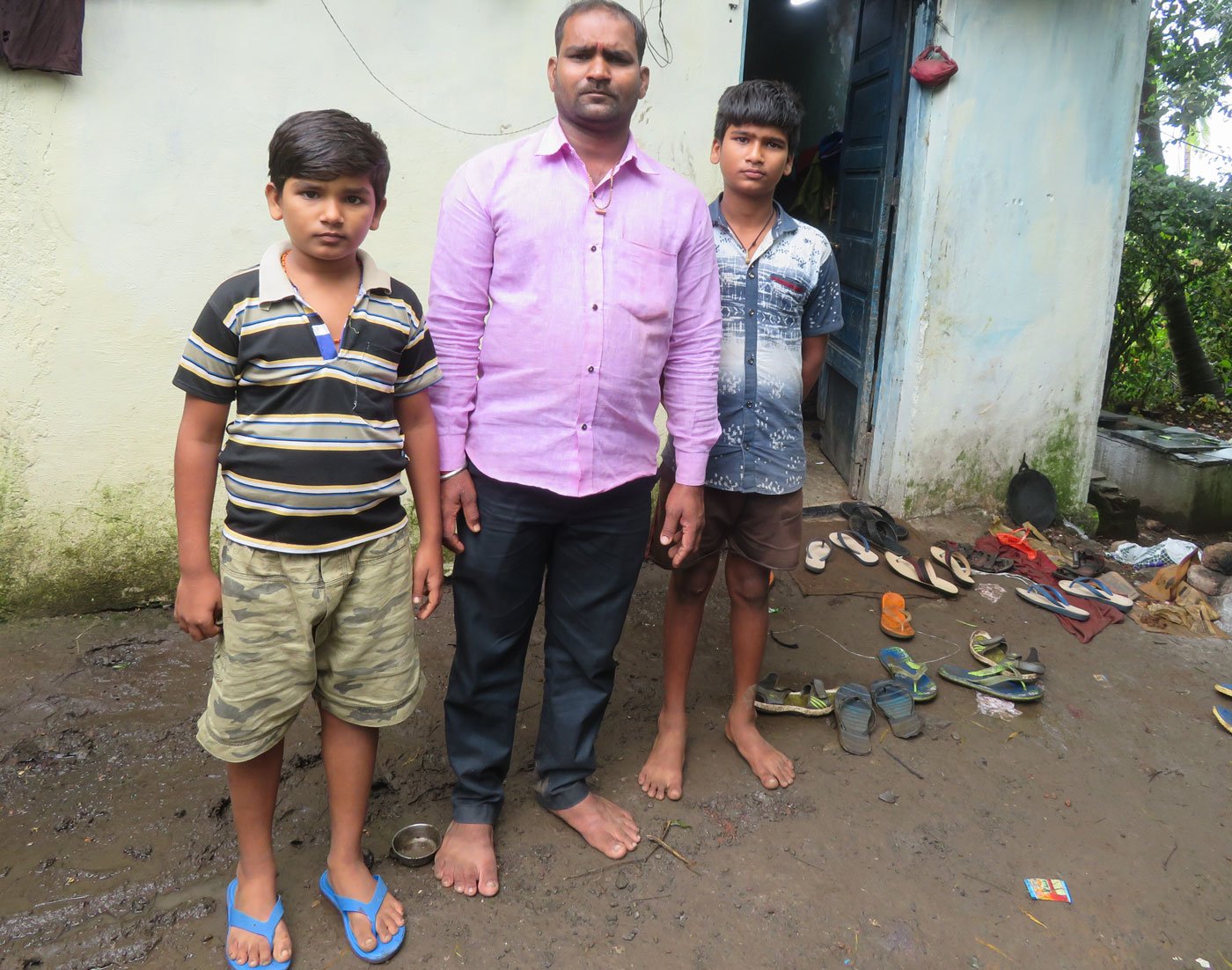
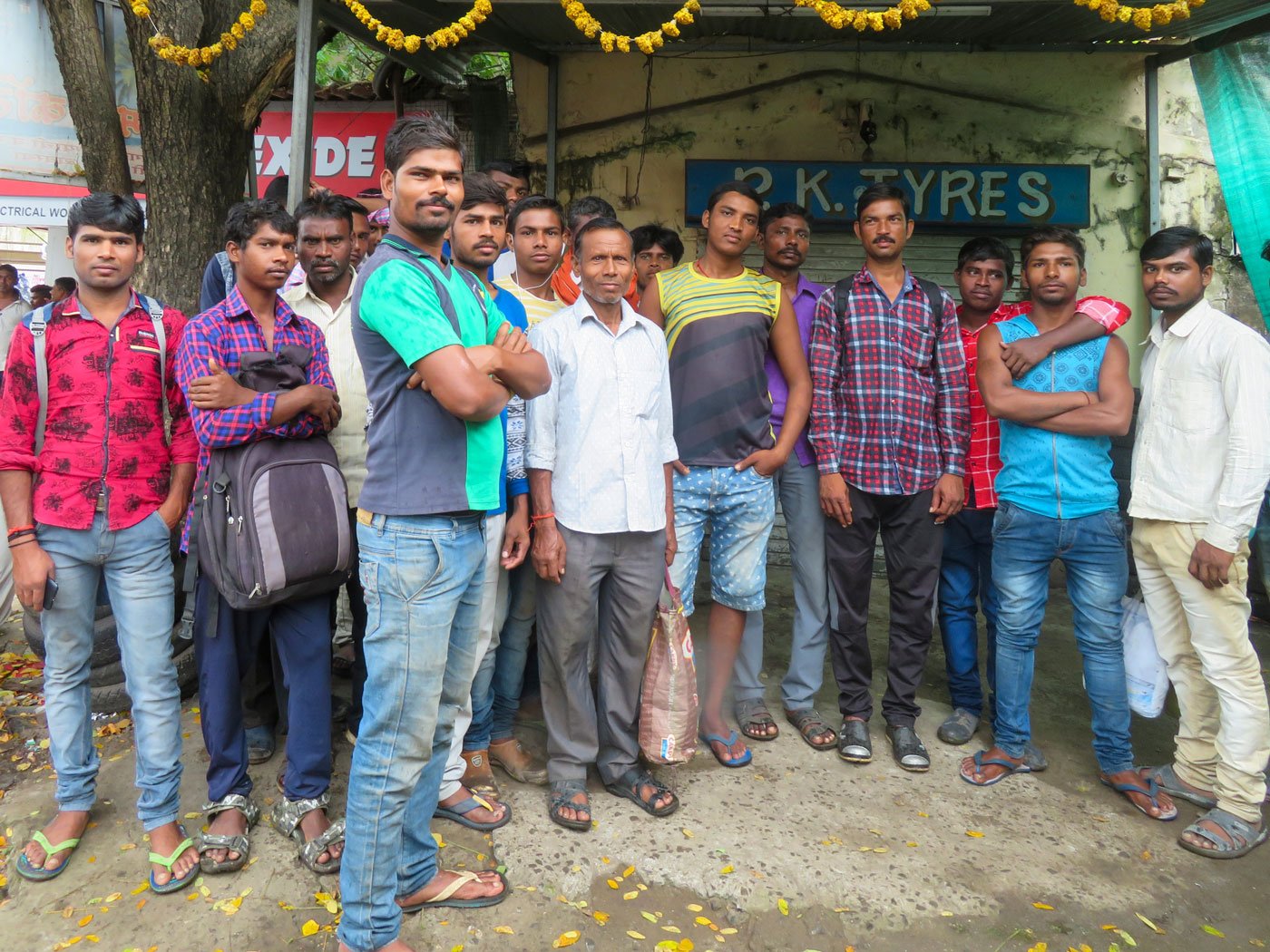
Left: When Raghu (standing behind his father Manish Pal) and his brother Sunny, moved with their parents from UP to Chennai to Maharashtra, at each stop, Raghu tried valiantly to go to school. Right: Manish and other migrant workers wait at labour nakas in Alibag every morning for contractors to hire them for daily wages
In a city completely new to him, Raghu felt homesick. “I used to play cricket, gilli danda , kabaddi with my friends in the village. We used to climb trees and eat mangoes,” he recalls. In north Chennai’s Royapuram locality, instead of their two-floor house with a courtyard and two bullocks, was a room of tin sheets. Instead of the babool, jamun and mango trees, was the huge scaffolding of an under-construction residential building, piles of cement and JCB machines – the site where his parents were working for Rs. 350 a day each.
Already struggling with these changes, for Raghu perhaps the biggest change was the new school. He did not understand the language and had no friends, though in school he tried sitting next to two other migrant boys from Bihar. After attending the Chennai school for just three weeks, he returned home crying one day, recalls Gayatri. “He said he didn't want to go to school anymore. That he didn’t understand anything there and felt everyone spoke angrily with him. So we didn’t force him.”
Unlike students whose parents could afford tuition classes, or help their children with homework, Gayatri and Manish were not in a position to teach Raghu. While Manish has studied till just Class 4, Gayatri learned how to write her name in Hindi just a year ago – Raghu taught her. She spent her childhood grazing buffalos and working on a farm along with four younger sisters. “When it’s difficult to just send him to school, how will we put together money for extra tuitions?” she asks.
After dropping out of the Chennai school, Raghu spent three years watching his parents working at the construction site, and taking care of Sunny, who had not been enrolled even in kindergarten. Sometimes, he would walk along with his mother to collect sticks, plastic and paper to light the chulha for cooking.
And while school remained difficult, and their parents busy, the construction site employers too made no provisions for the child care, schooling, safety and healthcare of migrant children like Raghu and Sunny. Such sites, notes a 2011 workshop report by UNICEF-ICSSR, employ 40 million migrants in India.
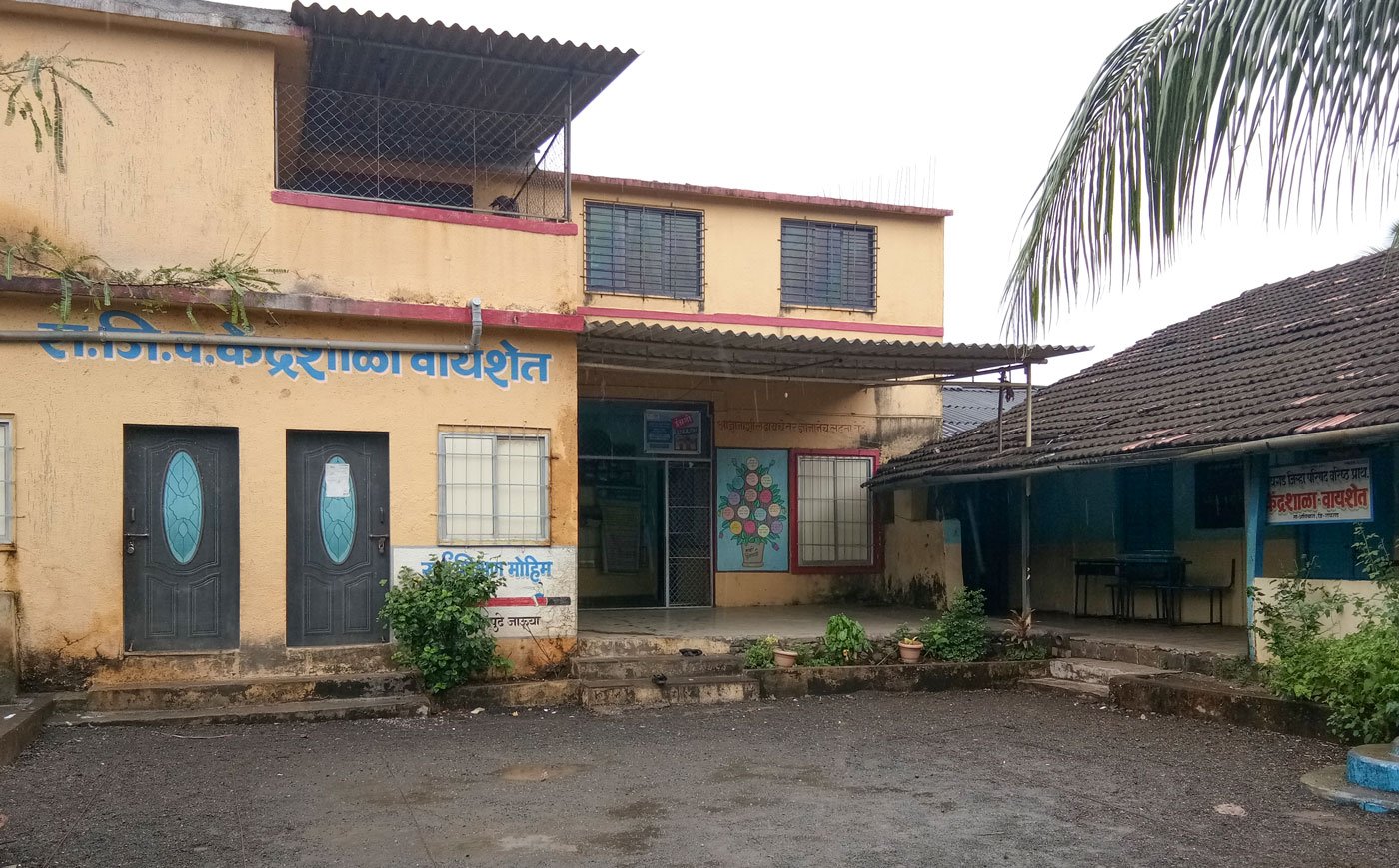
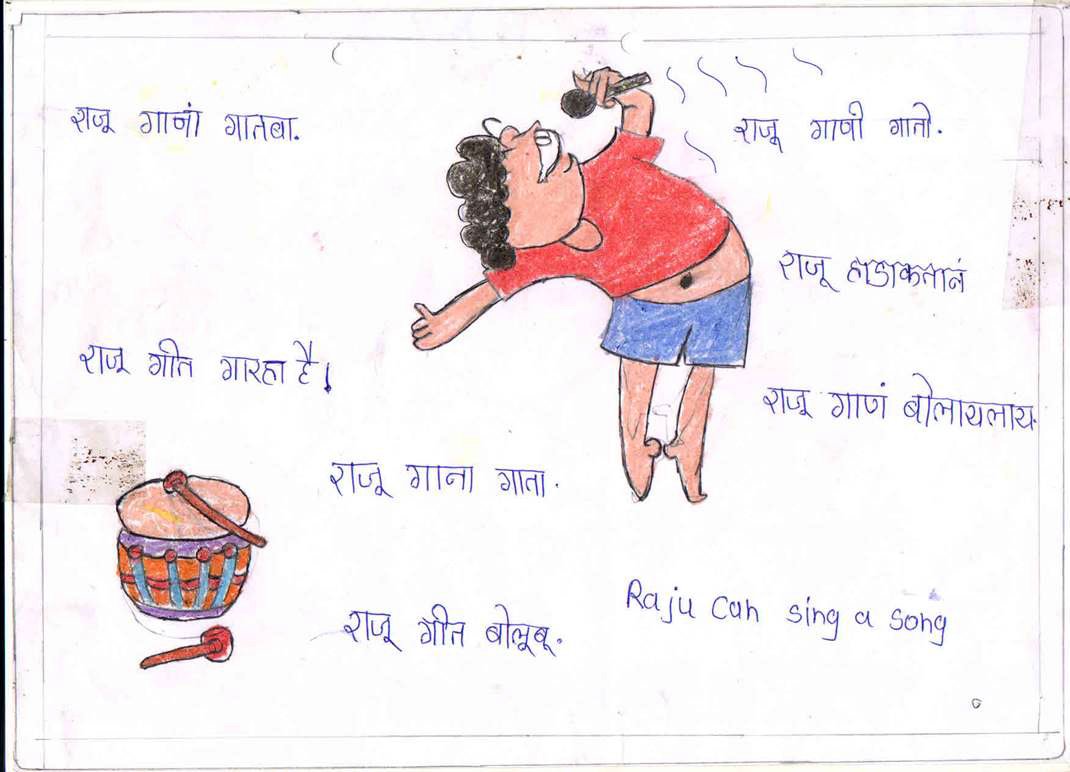
Left: The zilla parishad school in Vaishet that Raghu and Sunny attend, where half of the students are children of migrant parents. Right: At the government-aided Sudhagad Education Society in Kurul village, students learn Marathi by drawing pictures and describing what they see
And like the two brothers, across India, 15 million children who migrate either independently or with their parents lose out on a stable education, or any education, notes the report. “The seasonal, circular and temporary migrations affect children’s education hugely. Children are forced to discontinue school education and thus suffer from learning deficits… About one third of the children of migrant workers [who move with their parents and don’t stay back in the village with other family] are unable to attend school,” the paper notes.
And when parents shift from place to place looking for work, the barriers to studying grow higher for children like Raghu. When work at the construction site in Chennai got over, in March 2018, Manish and Gayatri moved to Alibag taluka in Maharashtra’s Raigarh district, where a relative had been staying for two years.
Manish continued to work as a construction labourer, Gayatri stopped due to constant back pain, and now looks after the house and kids. Every morning at 8 a.m. Manish stands at the labor naka at Mahavir Chowk in Alibag town, awaiting labour contractors, and earns Rs. 400 per day for around 25 days of the month. “Sometimes 4-5 days go by when no one picks me up for work. So no income that day,” he says.
With the move to Alibag, another struggle began for Raghu – he now had to try and comprehend textbooks written in Marathi, attend another new school and try to make new friends. When he saw a neighbourhood boy’s Class 4 geography textbook in Marathi, he was unable to read the Devanagari script. He also had a lot to catch up after three years of no school. Still, he re-started schooling in mid-July 2018—11 years old and in Class 4, with kids younger than him.
“I had forgotten that the Marathi characters were the same as Hindi, but it was written differently,” he says. “Suresh [a neighbourhood friend] taught me the basics of how to read and the meanings of words. Slowly, I started to understand.”
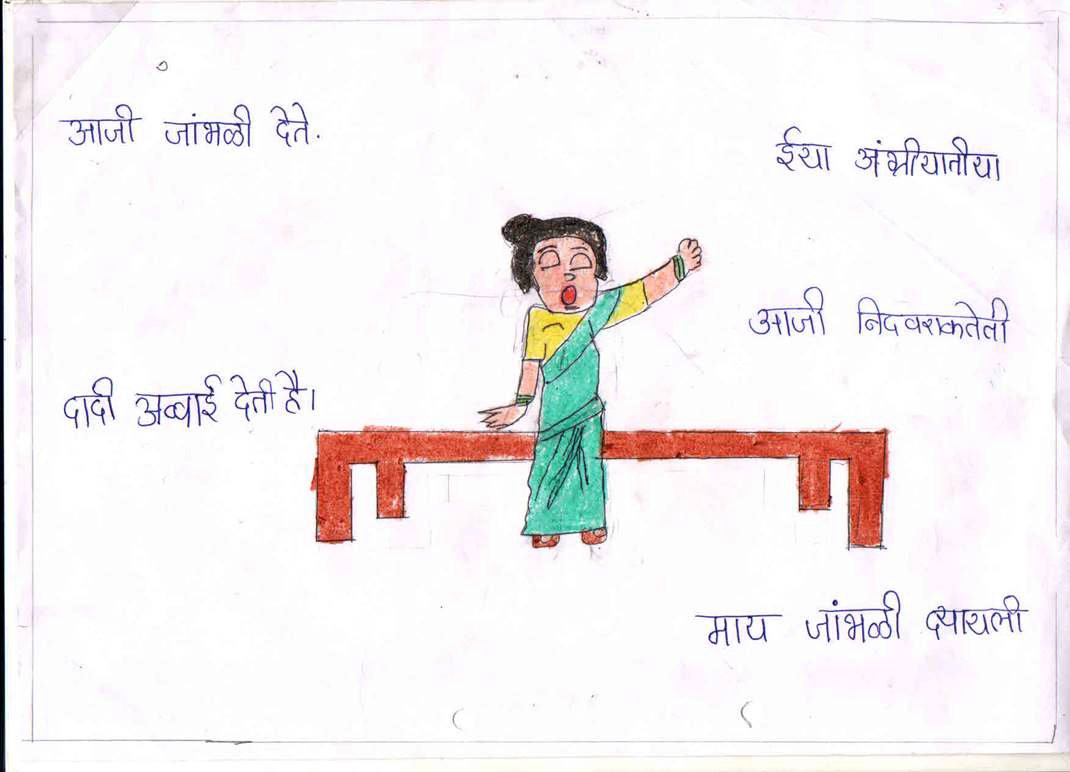
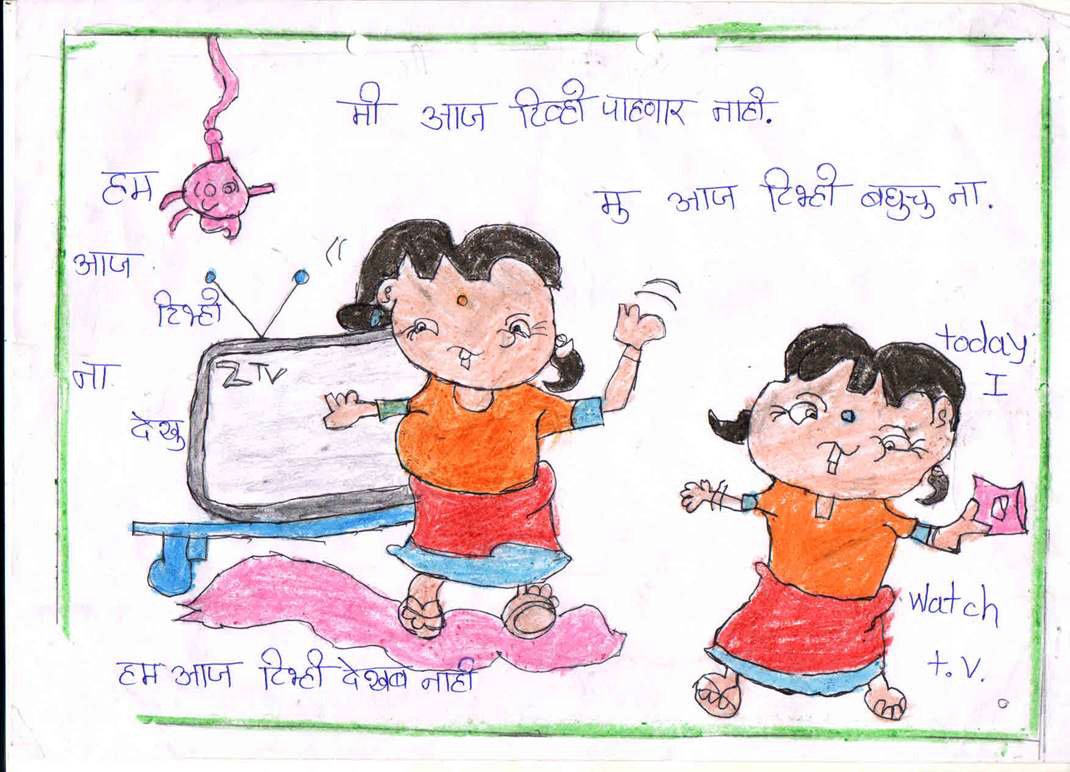
Students at the Sudhagad school draw pictures like these and write sentences in Bhojpuri or Hindi, as well as in Marathi. The exercise helps them memorise new words
Raghu attends the Vaishet village zilla parishad (ZP) school. Of the school’s 400 students in Classes 1 to 10, around 200 are the children of migrant parents, says Swati Gawade, a primary class teacher. Here, Raghu met other kids from Bihar and Uttar Pradesh. He now studies in Class 5 and can read, write and talk in Marathi. Sunny too was enrolled by their parents, and is now in Class 3.
Alibag is a growing coastal town, located around 122 kilometres from Mumbai city. Its spiralling real estate business over the last two decades has drawn many migrant labourers, who come with their families from Uttar Pradesh, Bihar and Madhya Pradesh. Their children usually study in the taluka ’s ZP or government-aided Marathi medium schools.
To make the transition easier, some of the teachers initially converse in Hindi with the migrant students, says Gawade. “Alibag’s ZP schools have many students from migrant families and it’s extremely difficult for a child to adjust in a completely new environment. As teachers, we can’t change the textbooks for these kids, but at least we can change our language of communication for a few days. Children pick up new things fast, but efforts should first be made by the teachers.”
Around five kilometres from Vaishet, in Kurul village’s Sudhagad Education Society, a government-aided school a Marathi language session is underway in Class 5. Teacher Mansi Patil has asked each child to talk for few minutes in front of the class to build confidence in them. It’s 10-year-old Satyam Nisad’s turn: “In our village people work on farms. We also have a farm. When it rains, they sow seeds, then after a few months they cut the crop. They separate grains [thresh] from stalks. Then they sieve it and store in gunny bags at home. They grind it and eat roti .” The 22 students in the classroom clap.
“Satyam used to be very sad and would not talk to anyone,” says Patil. “Teaching the child the very basics, starting with an introduction to the alphabets, gives them some confidence to talk to teachers and other kids. You cannot bombard them with long sentences in a language they have never heard of. You need to be gentle with them.”
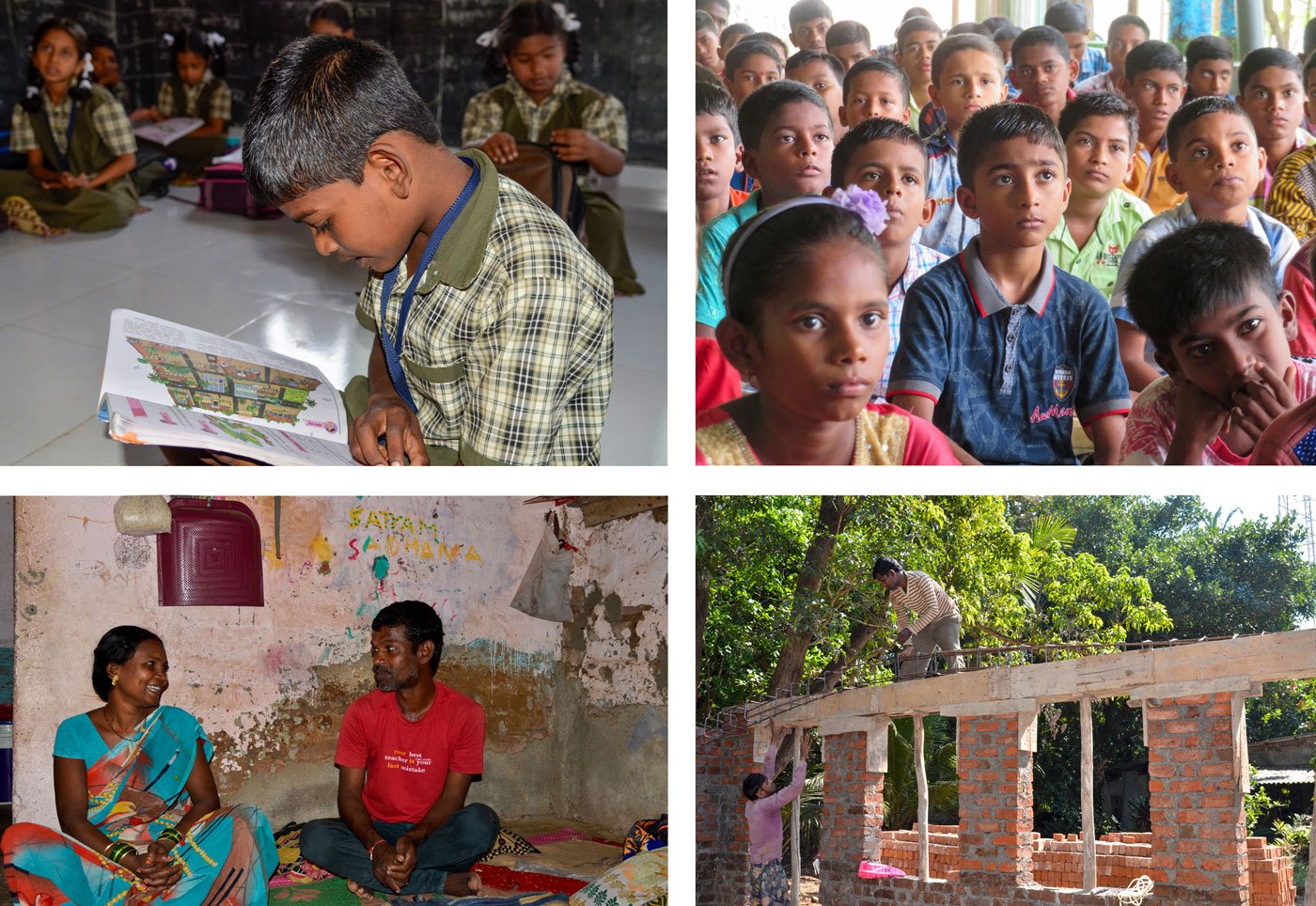
Top row: After Satyam Nisad's family migrated from Uttar Pradesh in 2017, he was enrolled in the Sudhagad school, where 178 of the 270 students are migrant children. Bottom row: Satyam’s parents, Aarti Nisad and Brijmohan Nisad, who works at construction sites. They used to cultivate bajra on the family’s one acre farmland back home
Satyam (in the foreground in the cover photo on top) came to Alibag in 2017 with his parents. It was a major change for him from his village, Rampur Dullah, in Deoria district of Uttar Pradesh. Then just eight years old and in Class 3, Satyam had to get used to Marathi after going to a Hindi medium school and speaking in Bhojpuri at home. “When I saw Marathi for the first time, I told my parents that it is wrong Hindi. There was no danda at the end… I was able to read characters but I could not understand the meaning of the entire word,” says Satyam.
“Our children have to go to Marathi medium schools. The English school fees are high and we can't afford it,” says 35-year-old Aarti, Satyam’s mother, sitting in the family’s 100-square feet rented room. Aarti herself has studied till just Class 2; she is a homemaker and farmer who cultivated bajra on the family’s one acre farmland in Rampur Dullah. Her husband, 42-year-old Brijmohan Nisad, also worked on the land, but after repeated crop failures dues to poor irrigation, he left the village looking for work.
Now, construction labour fetches him a daily wage of Rs. 500 for 25 days of the month. That income has to meet the expenses of his family of five (including two daughters – Sadhana, 7, and Sanjana, 6, who study in the same school that Sataym attends). And he sends Rs. 5,000 every month to his elderly parents in their village.
In Sasawane village, 20 kilometres from their house in Kurul, working on a building under the scorching sun, Brijmohan tells me, “I don’t want my children to do the hard labour that I do. I want them to study. All these efforts are for them.”
Like Satyam, Khushi Rahidas too grappled with the language change. “I used to study in my village school in Bhojpuri,” says the Class 6 student at the Sinhagad school. “I could not understand Marathi and didn’t feel like going to school. The characters were the same like in Hindi but it sounds different. But eventually I learned it. Now I want to be a teacher.”
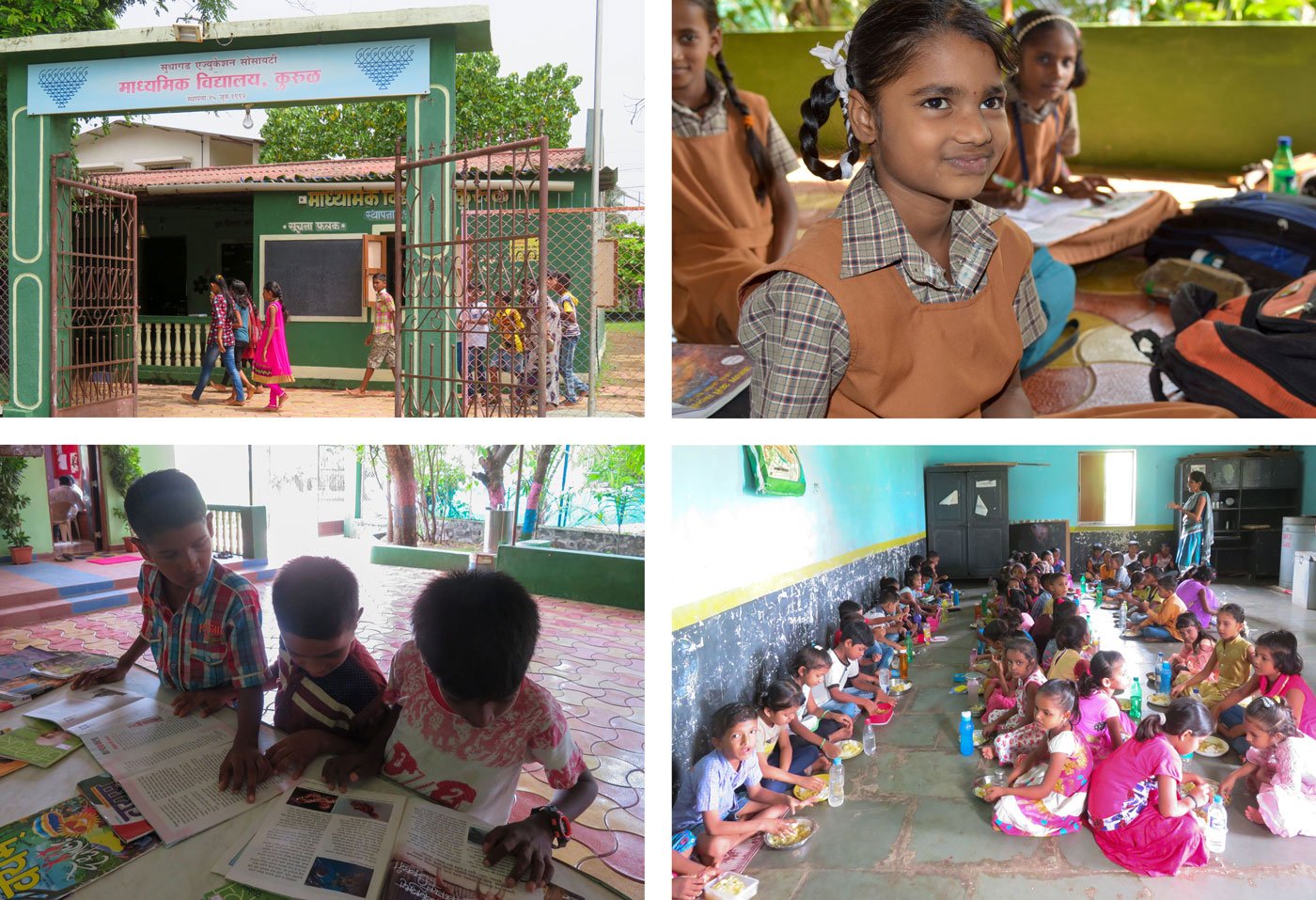
Top left: At a few schools, such as the Sudhagad Education Society in Kurul, teachers try to ease the language struggle for migrant students. Top right: Khushi Ramdas, a Class 6 student of the school, spoke only Bhojpuri when she arrived. Bottom left: Students reading books in Marathi at the Sudhagad school. Bottom right: During the mid-day meal, usually a major reason for enrollment
Khushi’s family came to Alibag from Uttar Pradesh’s Ularapar village. Her mother Indramati earns Rs.150 a day making around 50 samosas for a small eatery near their house in Kurul village. Her father Rajendra works on construction sites for Rs. 500 a day. “We don’t have any land, we used to work on others’ farm. But many farmers left the village looking for work, and there was no other work in the village. We started a new life in Alibag. All these efforts for them,” says Indramati, pointing to her two daughters and a son.
With an increasing number of the non-Marathi students like Khushi and Satyam in the Sudhagad school – 178 of the 270 students from kindergarten to Class 10 are from migrant families – principal Sujata Patil has been holding weekly group discussions on various topics such as festivals, Republic Day, sports personalities, freedom fighters, seasons. The teachers use picture cards, allowing children to speak in their mother tongue to describe what they see, and then tell them the corresponding word in Marathi. After the discussion, the students too draw pictures and write a sentence in Bhojpuri or Hindi, as well as in Marathi. This exercise helps them memorise words.
The school also pairs a new Hindi or Bhojpuri speaking child with one who knows Marathi. So 11-year-old Suraj Prasad is reading out a sentence in Marathi from a storybook on animals, and his new classmate Devendra Rahidas, also 11 years old, repeats the sentence. Both boys came to Alibuag with their parents from Uttar Pradesh – Suraj in 2015 and Devendra in 2018.
“Languages differ from state to state and different families also have different mother tongues. So it is important to make a migrant child comfortable with the local language as a medium of learning, for them to be able to continue studying,” says principal Patil. She believes such efforts can reduce school drop-out rates.
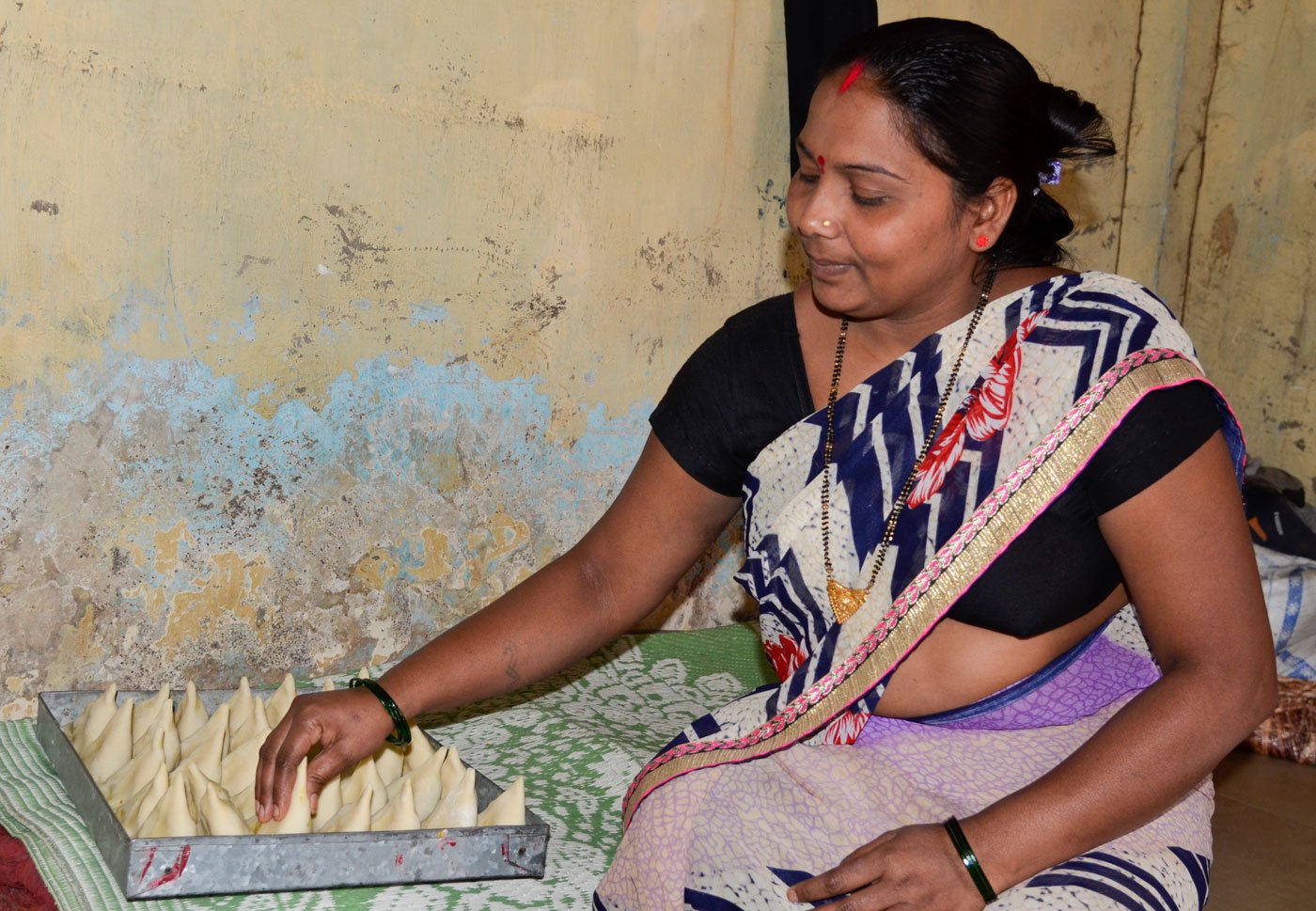

Left: Indramati Rahidas, Khushi’s mother, supplies 50 samosas a day to a small eatery. 'All these efforts are for them,” she says Indramati, pointing to her children. Right: Mothers of some of the migrant children enrolled in the Sudhagad Education Society
Language, or an unfamiliar medium of instruction, is among the reasons that pushes students out of school, notes the National Sample Survey, along with other reasons as financial constraints, quality, and educational infrastructure. The 2017-18 report notes that India has a 10 per cent drop out rate at the primary level, 17.5 per cent by upper primary or middle school, and 19.8 per cent at the secondary level.
The UNICEF-ICSSR report also notes: “The inter-state migration of children poses greater difficulty because of language barriers and different administrative set ups. Neither at the destination nor at the origin does the state provide support for the migrant children, in spite of the Right To Education [RTE] Act passed by the parliament.”
“It is very important to find a solution, formulate policy to provide quality education by eliminating the language hurdle to inter-state migrant children,” says Heramb Kulkarni, Ahmednagar-based education activist. “More so because once a child is out of school he/she ends up as a child labourer with no secure future.” Swati Gawade, teacher at the Vaishet ZP school, suggests that state authorities must keep track of migrant children and ensure their schooling under RTE.
With little state support, but with some help from friends and teachers, Raghu, Satyam and Khushi can now converse in, write and understand Marathi. But the sword of migration remains hanging on their heads. Their parents may move again, looking for work in another state – that has another language. Raghu’s parents have already decided to leave for Ahmedabad, Gujarat, in May. “Let his exams get over,” says his father Manish, clearly worried. “We will tell them after the result.”
